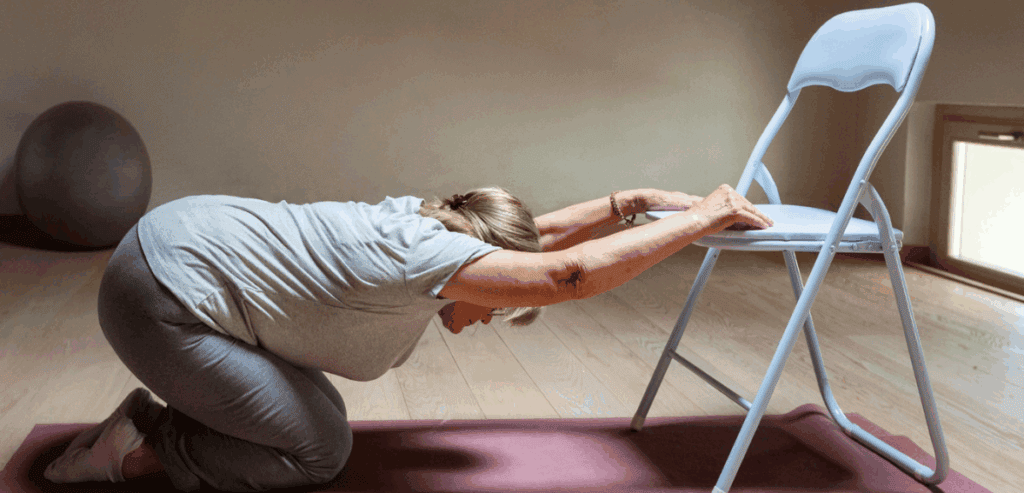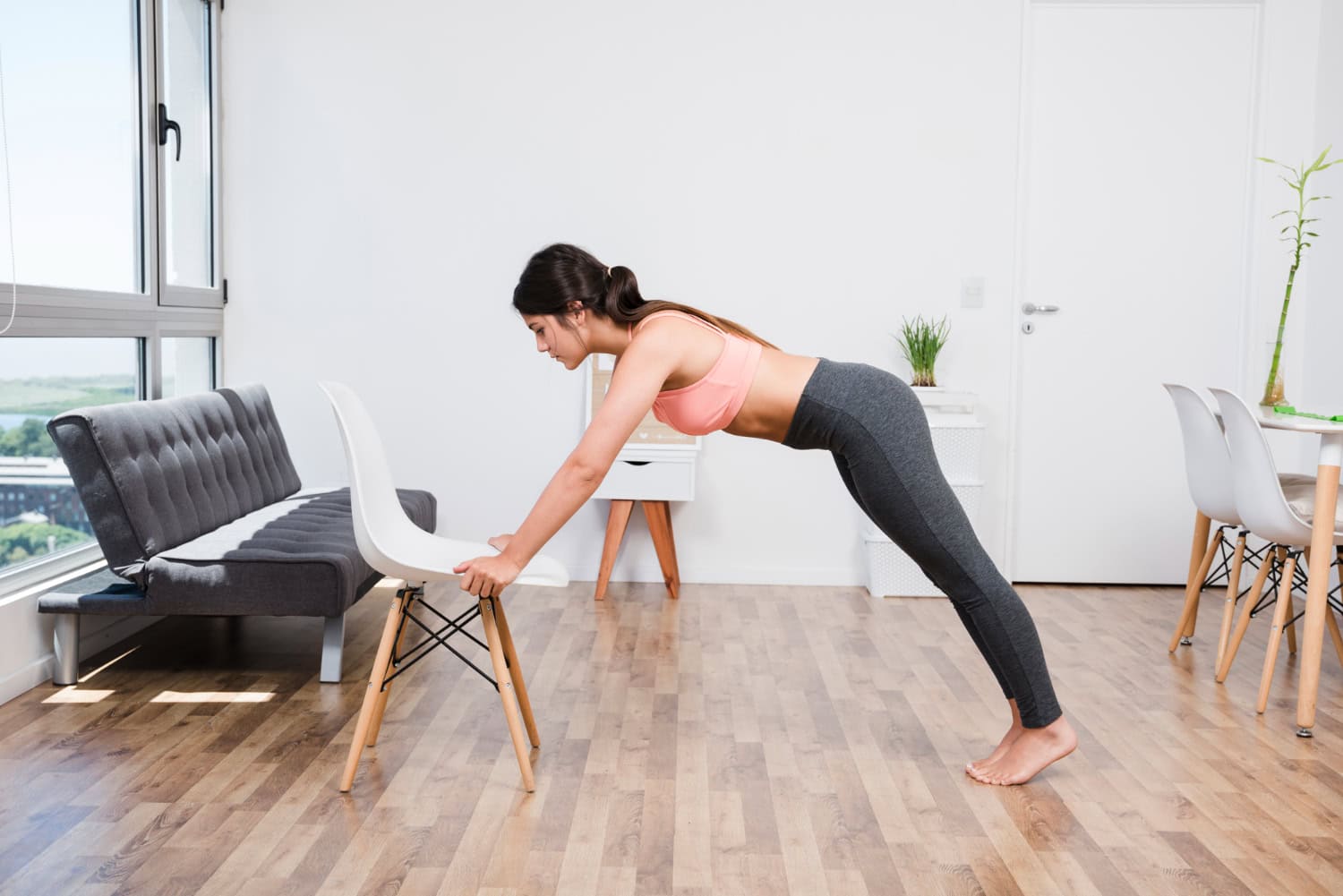Everyone should be physically active regardless of age or ability. Not all exercise routines are suitable for those with limited mobility. People with injuries, chronic conditions or age related challenges find traditional exercise difficult or even dangerous. This doesn’t mean they should give up physical activity altogether. In fact, they may lose more strength, flexibility and independence.
Chair based exercise routines are a safe and effective way to be active without having to stand, balance or use complicated gym equipment. These routines help you build strength, improve flexibility and cardiovascular health all from a seated position. For many these are more than just a substitute for regular exercise, they are a tool to regain confidence and physical function.
With the right guidance, chair workouts can be tailored to meet individual needs and goals. Whether someone is looking to manage chronic pain, boost circulation, or simply stay moving during the day, these low-impact exercises provide a valuable solution. For those pursuing fitness with limited mobility, chair routines can be a game-changer in both physical health and emotional well-being.
Understanding Mobility Limitations and the Need for Adapted Fitness
Mobility limitations can result from aging, injury, surgery, or chronic health conditions like arthritis and multiple sclerosis. For people affected by these challenges, traditional exercises may feel intimidating or unsafe. Activities like walking, running, or even simple balance poses can increase the risk of falls or further injury. The loss of independence that follows can lead to isolation and decreased mental health.
It’s important to understand that movement is still possible even when mobility is restricted. Adapted fitness routines that accommodate limitations are not just helpful; they are necessary. These routines reduce the risk of strain, support joint function, and help the body stay resilient.
Chair-based routines offer an ideal middle ground. They allow individuals to exercise in a way that respects their limitations while still delivering results. From strength training to stretching and even cardio, a variety of low-impact exercises for seniors and others with mobility issues can be performed sitting down.
Key Benefits of Chair Based Exercise for Limited Mobility
Chair exercises are more than just a softer form of exercise. They bring physical and emotional benefits to those who are otherwise sedentary. One of the biggest advantages is that they allow movement without putting pressure on the joints. Cardio can be supported through seated movements that raise your heart rate gently. Arm and leg raises, seated marches and twists help improve circulation, stamina and lung capacity. This gives you more energy throughout the day.
Strength training is also possible. With resistance bands, light hand weights or even just body weight, chair exercises can target major muscle groups. This prevents muscle loss and supports functional independence. Chair exercises can even reduce the risk of falling when you do need to stand or move.
Emotionally, chair based routines boost mood and mental well-being. Regular activity releases endorphins, reduces anxiety, and builds a sense of accomplishment. The routine of movement, even in small doses, contributes to improved self-esteem and mental clarity.
Popular Chair Based Exercise Categories
There are several categories of chair based workouts, each designed to address different aspects of physical health. These include cardio, strength, flexibility, and balance-focused routines. Each type of workout can be adapted based on an individual’s health status and preferences. Chair cardio involves dynamic, rhythmic movements like arm swings, leg kicks, or seated marches. These are great for increasing heart rate and improving circulation. They mimic the benefits of a standing cardio session without the impact.
Strength-based routines often use resistance bands or light weights. Movements like bicep curls, shoulder presses, and leg lifts can be done while seated, allowing individuals to build muscle without risking falls. These exercises are vital for maintaining daily functionality, especially for tasks like getting out of bed or lifting objects. Flexibility exercises include stretches for the arms, legs, and spine. They are essential for preventing stiffness and promoting a healthy range of motion. Gentle spinal twists, hamstring stretches, and overhead reaches can help loosen the body and improve posture.
Balance routines focus on core engagement and control. While the person remains seated, they can perform torso rotations, single-leg lifts, or weight shifts that activate stabilizing muscles. These movements support balance when transitioning between seated and standing positions, which is vital for those dealing with fitness with limited mobility.

Step-by-Step Sample Chair Workout Routine
A simple and effective chair workout can be completed in about 20 to 30 minutes. Here’s a sample structure that combines cardio, strength, and flexibility. This routine is suitable for beginners and can be modified to suit different abilities.
- Start with warm-up: Begin by sitting tall, feet flat on the floor. Roll shoulders forward and backward, then gently rotate the neck side to side. Raise arms overhead and lower them slowly to get the blood flowing.
- Cardio section: Perform seated marching by lifting one knee at a time. Add arm swings for increased intensity. Continue for two to three minutes at a comfortable pace.
- Strength section: Use light weights or water bottles for bicep curls, pressing them upward for shoulder work. Perform 10 to 12 repetitions of each movement. Follow with seated leg lifts, alternating legs.
- Flexibility and cool-down: End the session with gentle stretches. Reach arms overhead and lean slightly to each side. Perform a seated hamstring stretch by extending one leg forward and reaching toward the toes. Finish with deep breathing and seated relaxation.
This routine highlights how low-impact exercises for seniors and others with mobility restrictions can still deliver a full-body experience without requiring advanced fitness levels or special equipment.
Creating a Safe and Supportive Exercise Environment
For chair workouts to work, the right environment matters. Safety first. Choose a sturdy, armless chair that doesn’t slide or tilt. The feet should be flat on the floor and there should be enough room to move arms and legs. Support from family, caregivers or professionals can also help. Having someone nearby can provide motivation, guidance or help if needed. For virtual classes, make sure the video is clear and the instructions are easy to follow.
Music, natural light or calming surroundings can help set the tone. A nice environment can make the routine feel less like a task and more like a self care ritual. Staying hydrated and wearing comfy clothes will also help you focus and feel more comfortable during chair workouts.
Adapting Routines to Specific Needs and Conditions
One of the most powerful aspects of chair exercises is their adaptability. Whether someone is recovering from surgery, managing arthritis, or living with a neurological condition, the movements can be adjusted in pace, intensity, and range. For individuals with arthritis, gentle range-of-motion stretches and joint-friendly exercises help relieve stiffness. For those with balance disorders or recovering from a stroke, coordination-focused movements can rebuild nerve-muscle connections.
People dealing with long-term conditions like Parkinson’s or MS may benefit from repeated, rhythmic actions that stimulate motor control. In every case, exercises can be paced slowly and supported with verbal cues, visual aids, or even touch when guided by a therapist. Customized routines make fitness with limited mobility achievable without fear of overexertion or injury. Listening to the body and working within safe limits is key to long-term success.
Encouraging Consistency and Building a Routine
Like any workout program, consistency is key. Short sessions done regularly are better than long ones every now and then. The goal is to make chair workouts a part of your daily or weekly routine, depending on your energy levels and health conditions. Start 2-3 times a week and gradually increase frequency. Tracking progress, even small wins like increased range of motion or less stiffness helps to stay motivated. Simple tools like a journal, calendar or mobile reminder can help you stay committed.
Involving others can also help with accountability. Joining a group class, online or in-person, provides social support. For seniors this also helps to reduce isolation. For caregivers or family members, joining in the session can be a bonding experience and show that you prioritize health.

Chair Exercises in Rehabilitation and Elder Care
Chair-based routines are widely used in rehabilitation programs and elder care settings for a good reason. They are safe, gentle, and effective at maintaining function without taxing the body. Many physical therapists incorporate chair exercises as a first step in recovery plans. In senior care communities, daily movement programs often include seated routines to improve circulation, support joint mobility, and enhance mood. These group activities bring structure and joy to the day while reducing the risk of falls and promoting longevity.
Whether the goal is to recover strength after surgery or maintain independence in old age, low-impact exercises for seniors serve as an important foundation. They make physical activity accessible for all, regardless of condition or location.
Overcoming Common Barriers and Misconceptions
One of the biggest barriers to chair workouts is the misconception that seated exercises are not “real” workouts. Some people may feel that unless they are sweating or moving vigorously, they’re not making progress. This is far from the truth. Chair routines can be both challenging and effective. The key is intention and consistency. Movements that may appear simple can engage muscles deeply and promote endurance over time. Mental engagement also plays a role in effectiveness.
Another common challenge is the lack of motivation or confidence. Individuals may feel unsure of where to begin or fear that they’ll make mistakes. Starting small, following trusted sources, or working with a trainer can help ease those doubts. Building a positive mindset is essential. Emphasizing ability over limitation, focusing on progress rather than perfection, and celebrating every small win can help individuals stick to their chair workouts and experience the full benefits.
Conclusion: A More Inclusive Approach to Fitness
Chair exercises are a more inclusive and kind way to health and fitness. They prove you can move at any age and in any condition. Whether to stay independent, recover from injury or just feel better day to day, these exercises give you a way to get physical again. As awareness grows, more people are discovering the magic of seated routines. With practice and the right mindset, fitness with limited mobility is not a goal, it’s a reality. No one should be left out of the fitness conversation because of physical limitations. Chair workouts open the door to a healthier, more active life for everyone.





















